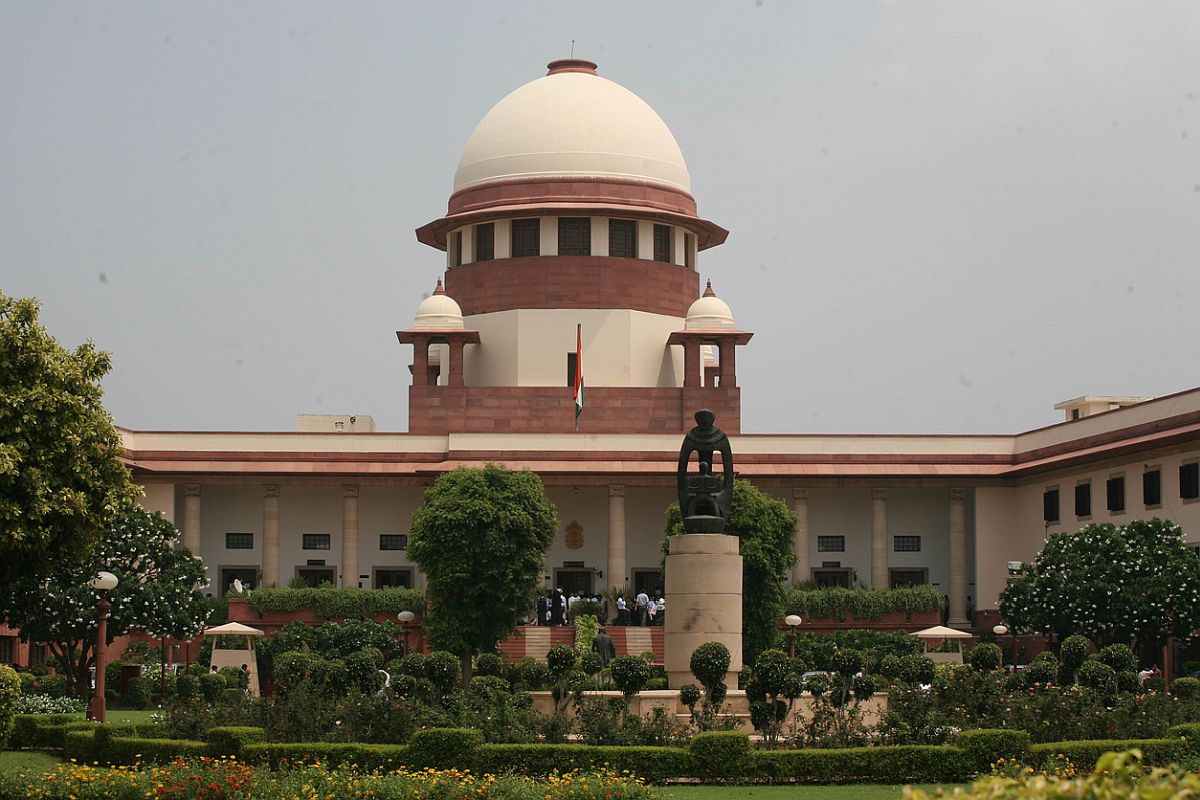SC orders Court Commissioner’s appointment in Sanganer land acquisition case
The Rajasthan government has also tendered an apology in the court for reported contempt of the court in the case of land acquisition.
The petition sought directions to declare unconstitutional a contempt law provision, which makes scandalising courts an offence.

Supreme Court. (Photo: iStock)
Advocate Prashant Bhushan, former Union Minister Arun Shourie and veteran journalist N Ram on Thursday withdrew their petition from the Supreme Court.
The petition sought directions to declare unconstitutional a contempt law provision, which makes scandalising courts an offence.
A bench headed by Justice Arun Mishra told the petitioners counsel senior advocate Rajeev Dhavan that it would not permit withdrawal, for refiling again in the apex court after sometime. Justice Mishra observed: “We can permit withdrawal for liberty to go to the High Court.” Dhavan agreed to go before the High Court to challenge the validity of the provision of contempt.
Advertisement
This plea created trouble for some officials in the Supreme Court registry, for listing it before a bench other than the one headed by Justice Arun Mishra which has already taken up similar matters.
According to sources of IANS the issues connected with the wrong listing of the case were taken up by officials concerned in the top court. The matter was listed before a bench of Justices D. Y. Chandrachud and K. M. Joseph on August 10, later it was deleted and listed on August 13 before a bench headed by Justice Arun Mishra.
According to a senior official, as per practice and procedure in use, the matter should have been listed before the bench, which is already seized with a similar matter, but, had been listed elsewhere by ignoring established practice and procedure. “In this regard, explanation of officials concerned have been called for,” said the source.
The Section 2(c)(i) of the Contempt of Courts Act, 1971, defines ‘criminal contempt’ as publication of anything — whether by words, spoken or written, or by signs, or by visible representation, or otherwise of any matter or the doing of any other act whatsoever — which scandalises or tends to scandalise, or lowers or tends to lower the authority of any court. The petitioners have asked the top court to issue directions declaring Section 2(c)(i) of the Contempt of Courts Act, 1971 as being violative of Articles 19 and 14 of the Constitution.
The plea argued that this sub-section is unconstitutional, as it is incompatible with preambular values and basic features of the Constitution, and violates Article 19(1)(a). They claimed the sub-section is unconstitutionally and incurably vague, and is manifestly arbitrary.
“The impugned sub-section, despite setting out penal consequences, is incurably vague. It uses vague terminology whose scope and limits are impossible to demarcate. In particular, the phrase “scandalises or tends to scandalise” invites subjective and greatly differing readings and application which is incapable of being certain and even-handed”, said the plea.
The petitioners’ argued that the sub-section violates the right to free speech and expression guaranteed under Article 19 (1) (a) and does not amount to a reasonable restriction under Article 19 (2). “That the impugned sub-section, despite setting out penal consequences, is incurably vague. lt uses vague terminology whose scope and limits are impossible to demarcate. ln particular, the phrase ‘scandalises or tends to scandalise’ invites subjective and greatly differing readings and application which is incapable of being certain and even-handed. Thus, the offence violates the Article 14 demands of equal treatment & non-arbitrariness”, said the plea.
(With inputs from IANS)
Advertisement